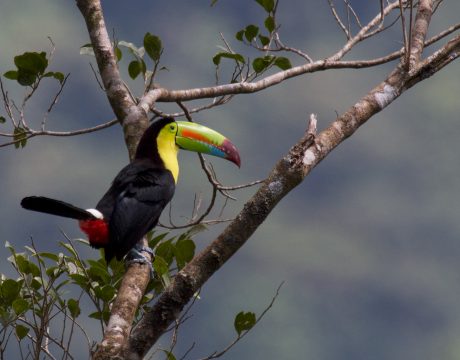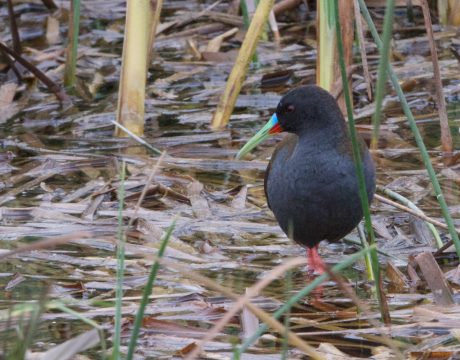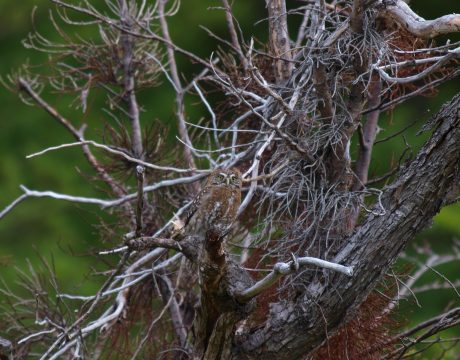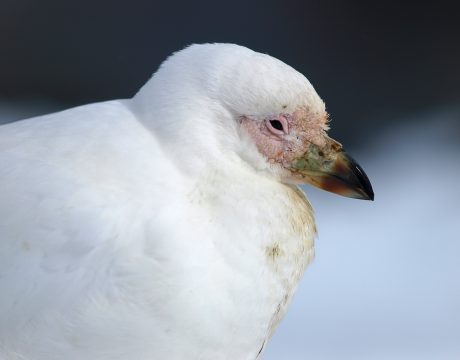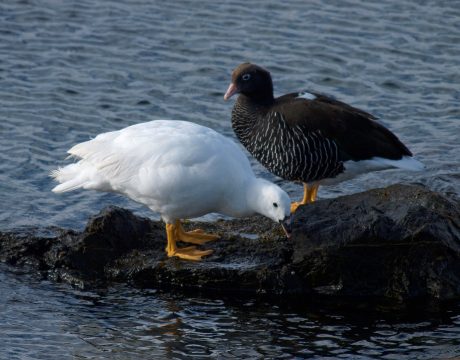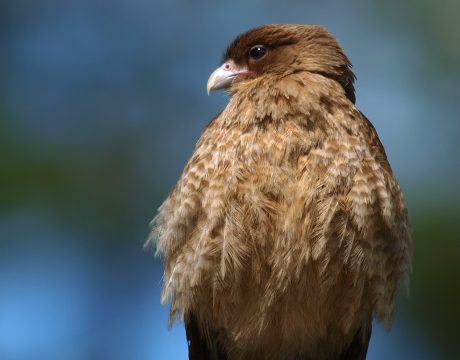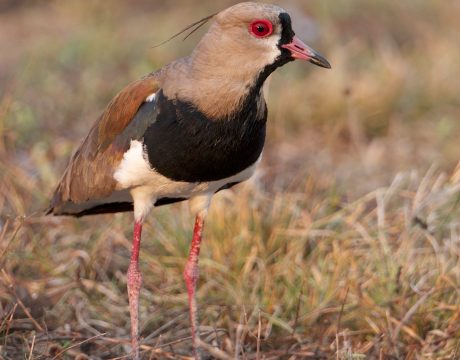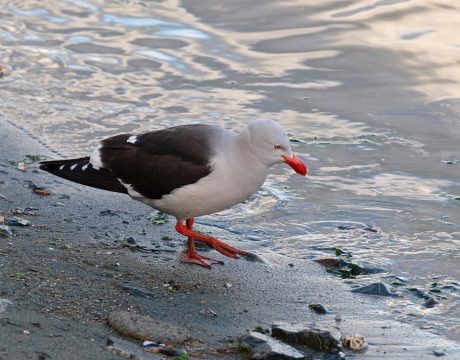Return of Bird of the Week: Keel-billed Toucan
Toucans are a signature bird species of the Neotropics. Their large size, spectacular bill, flamboyant tails and noisy calls make them immediately identifiable and immense fun to see. There are about 31(!) species of Toucan. The Keel-billed Toucan ranges from southern Mexico to northern Columbia, but they are most common in Costa Rica and Panama. The specialized bill is both lighter and more powerful than it looks; it’s adapted to crack open fruits and nuts. The colors are a sexual characteristic. In addition to fruits and nuts, Keel-billeds feed on small vertebrates, including snakes and lizards, and larger insects. They…
Return of Bird of the Week: Plumbeous Rail
“Plumbeous” means “lead-like,” and while the Plumbeous Rail’s body is dark grey, the bill and legs more than make up for the drab body. It’s not the best quality photo, but it’s a high-quality bird. It’s a widely distributed Rail, ranging from southern Ecuador to Tierra del Fuego. It’s also one of the easier rails to see; most are skulky and a few, like North America’s Black Rail, are near-impossible. WC saw them at sea level and in marshes at 10,000 feet. A pretty amazing distribution. For more bird photos please visit Frozen Feather Images.
Return of Bird of the Week: Austral Pygmy-Owl
WC found it completely by accident. Birding with Marcelo de Cruz in Tierra del Fuego National Park, Marcelo was imitating a pygmy-owl call, a birding technique to make songbirds move where they can be seen. To our surprise, he got an answer. After considerable searching in the soggy thickets of Tierra del Fuego, we found it. You’ll have to look closely. The bird is pretty cryptic, which is important to a daytime ambush hunter. The species is tiny, a male like this is just a bit over six inches long and weighs about two ounces. This is the southern limit of…
Return of Bird of the Week: Snowy Sheathbill
There are no vultures in the Antarctic. But there is carrion. The ecological niche of carrion eaters is occupied instead by the Sheathbills. Sheathbills are odd in a number of ways. Two species of Sheathbill, the Snowy and the Black-faced, make up the entre family of Chionidae. They are also the only land bird in Antarctica, meaning they have talons and not webbed feet. They are the only sub-Antarctic species with bare skin on their face, and the only species with those odd, horny plates on their will. It’s those plates that give the bird its common name. Like a…
Return of Bird of the Week: Kelp Goose
This is a strange goose, endemic to Patagonia and the Falkland Islands. It’s sexually dimorphic: the male is bright white with very large yellow legs; the female is dark brown with a heavily barred neck and chest, and a white eye ring. Kelp Geese are found exclusively on coasts and islets, generally on rocky or pebbly shores. It feeds only on the algae and seaweed growing on the rocks. This is probably the Hybridia subspecies. The species is poorly known to ornithologists. Even the population is a guess: 15,000. The species is not believed to be endangered. For more bird images, please…
Return of Bird of the Week: Chimango Caracara
There don’t seem to be any corvids – the family of birds that includes crows and ravens – in far southern South America. Their ecological niche in North America is filled by falcons, and especially by the Chimango Caracara. An adult bird is about 18 inches long. It’s behavior, at least for the birds WC saw, was strikingly like a Common Raven: bold, habituated to people and opportunistic. For example, it hangs around campgrounds and has been known to steal unattended food. Despite being one of the most common diurnal raptors in southern South America, there hasn’t been a lot…
Return of Bird of the Week: Southern Lapwing
Lapwings are a species of Plover. They are widespread across South and Central America, and there is considerable variation among the four subspecies. This is a bird that has succeeded and prospered in the face of human alteration of their ranges. This is a grassland bird, and man’s creation of pastures and fields has simply given the species more range. It’s not a bird you could easily confuse with any other. The face, very odd head shape and bright red eye and extensive black on the face, neck and belly are unique. The species has a crest in both sexes,…
Walker or Begich? The Moderate’s Dilemma.
Alaska voters, we need to have a conversation. And I know this may hurt a little. It’s about Bill Walker and Mark Begich, the two “moderates” in the 3-way race for Alaska governor – the first, a former Republican and incumbent, the second, a Democrat and former US Senator. The third player in our little melodrama is Mike Dunleavy, a former Republican right-wing conservative state senator from Wasilla who quit in the middle of his term. In the end, your vote is your choice and yours alone, but I can’t let you step behind the red, white, and blue curtain…
Anchorage Bans Plastic Bags
It’s been a process, let’s just say, as these things normally are. Should we ban those hideous one-use plastic grocery bags that end up clogging storm drains, wreaking havoc with water treatment facilities, getting stuck in trees and bushes, blowing across the road, and ending up in waterways and the ocean where they break down into the dreaded “microplastic” particles that get into the fish, and eventually us? Or should we just ban the really thin ones but not the medium ones or the thick ones? Or should we ban the thin, AND the medium? And on the public testimony…
Return of Bird of the Week: Dolphin Gull
(This week’s Bird of the Week is late; WC was off the internet for a while.) Another species from southern Argentina, Chile and the Falkland Islands, the Dolphin Gull is a smaller member of the Larids, the gull family. With its bright orange-red bill and legs, and yellow eye, it is possibly the easiest gull there is to identify in the field. It’s a scavenger and opportunistic predator. This bird is cruising a mixed colony of Rockhopper Penguins, Black-browed Albatross and King Shags, looking for an unguarded egg of chick. But its smaller size make it a target for bigger…





